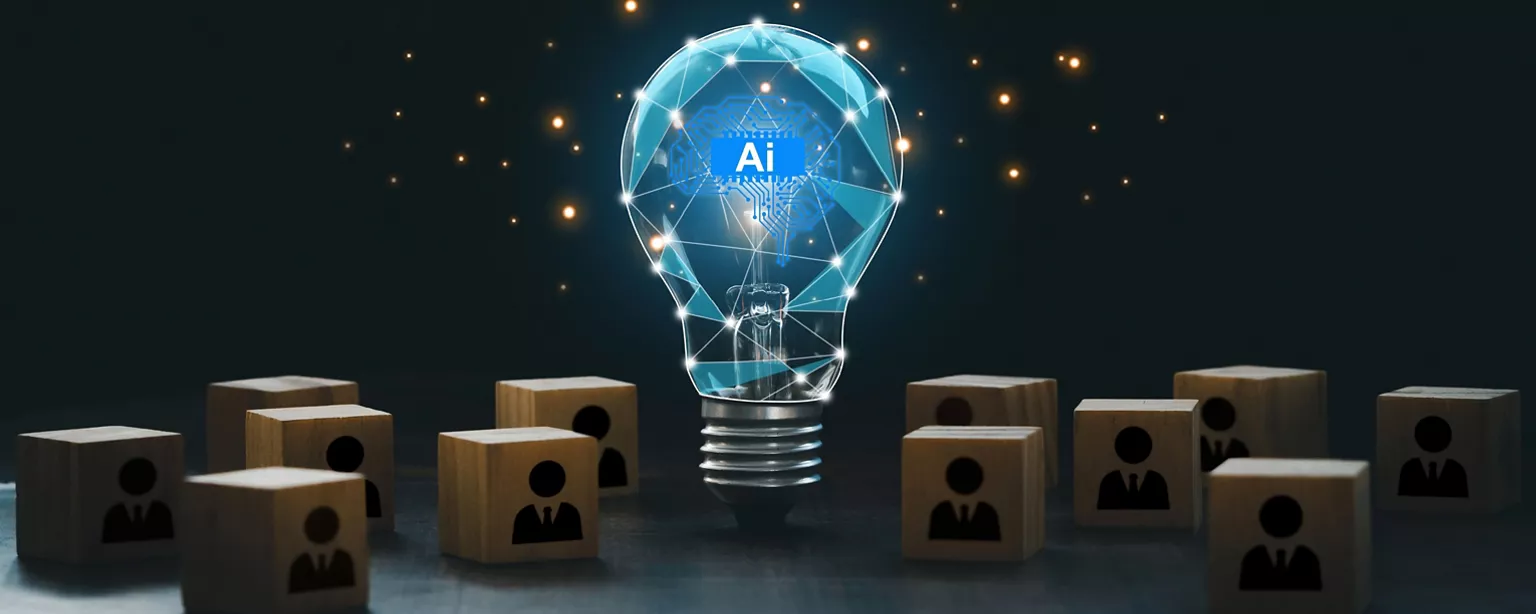By Rob Hosking, Executive Director for Administrative and Customer Support, Robert Half
Most HR teams are using AI. Very few are prepared to use it well.
AI is becoming a major force in how organizations hire, learn and operate. Skills are shifting. HR systems are rapidly modernizing. Employees are asking for more development, flexibility and support. Leaders want insight they can act on sooner. AI is quickly becoming part of how they get it.
That is why 2026 will be a pivotal year. The question is no longer whether AI will affect HR, but how HR leaders can integrate it in ways that strengthen workplace culture, capability and long-term planning. Because the gap between using AI and using it well is widening—and the teams that get this right will shape how their organizations grow.
I call this widening divide the HR readiness gap, the space between teams who deploy AI and teams who know how to turn it into meaningful advantage. It widens every time technology evolves faster than the people responsible for leading it.
Here is a preview of the AI trends that will matter most in 2026, and how HR leaders can prepare their teams to navigate the change with confidence.
AI Trends That Will Shape the Workplace
AI is becoming HR’s strategic accelerator
The strongest HR leaders I meet are no longer treating AI as a project. They treat it as a strategic partner.
They use AI to spot trends earlier, understand workforce shifts faster and focus more time on the conversations that shape workplace culture. AI surfaces information. People give it direction.
This mindset shift is becoming a competitive edge as the HR readiness gap expands.
Personalized onboarding is becoming the new standard
Generative AI is transforming onboarding into personalized onboarding experiences tailored to each new hire’s role, pace and communication style. Instead of one-size-fits-all materials, employees receive adaptive learning paths that evolve as they learn.
This mirrors what we’re seeing in the 2026 Robert Half Salary Guide: employees want development, flexibility and room to grow. And the HR-specific analysis, 2026 Human Resources Salary Trends: The Skills and Roles Driving Growth, shows employers leaning into those expectations through stronger learning programs and digital upskilling. AI-enabled learning helps HR meet these expectations while accelerating time-to-productivity, which is now a priority as workforce skills change.
This shift is also creating new hybrid roles, including the AI-powered learning and development designer, an emerging position highlighted in the Salary Guide.
Predictive analytics are strengthening retention strategies
Turnover rarely starts with a resignation. It starts with trends leaders don’t always see (or want to see)—engagement and productivity dips, uneven workloads, shifts in communication tone.
Predictive analytics help HR identify these signals sooner so they can guide managers, support teams and strengthen retention strategies before issues escalate.
Insight matters. Acting on insight matters more. Organizations that intervene early and consistently will be better positioned heading into 2026.
How AI is already reshaping HR decision-making
Before looking at what AI may do next year, it helps to look at what it is already doing. The biggest improvements are not coming from massive system overhauls but from everyday decisions that move faster and land stronger because of AI.
Here are three real-world inspired examples of how AI can support smarter workforce decisions for HR leaders:
1. When small signals spark timely conversations
A regional employer used AI to track engagement patterns. A subtle dip appeared in one team. HR followed up early, discovered role ambiguity after a reorganization and corrected the issue before morale declined.
Impact: AI offered a helpful cue. HR provided the outcome.
2. When workforce planning becomes clearer than spreadsheets
A mid-size company used AI to review capacity across teams. It revealed unused bandwidth in one group while another was stretched. Instead of opening a new role, HR shifted responsibilities internally and maintained productivity.
Impact: AI surfaced patterns traditional reporting missed.
3. When AI strengthens connection instead of replacing it
AI sentiment tools detected uncertainty in one department’s communication. HR followed up, learned that recent policy changes were unclear and worked with leaders to refine messaging.
Impact: AI identified the signal. Human conversation rebuilt trust.
These examples illustrate a larger trend: AI helps HR respond sooner, but people still determine the direction forward.
AI agents are giving HR more capacity for impact
AI agents now support routine HR tasks—scheduling, inquiries, triage—returning valuable hours to HR each week. The benefit is not just efficiency. It is renewed focus.
When AI handles administrative friction, HR professionals gain more space for coaching, problem-solving, culture-building and learning and development. These are the moments that improve engagement and performance.
The Salary Guide reinforces this shift, with HRIS roles projected for +2.4% salary growth, among the strongest increases heading into 2026, as organizations modernize systems and expand AI capability.
Skills-first hiring is gaining momentum
The move toward skills-first hiring is accelerating across industries. AI helps HR map internal skills, identify gaps and recommend mobility opportunities that traditional resumes may overlook.
This shift is fueling new hybrid HR roles, including two emerging positions highlighted in the Salary Guide:
Conversational AI designer
Ethical AI and HR compliance officer
These roles blend technology oversight with people strategy, and this foresight provides an early look at where HR is headed. Upskilling remains essential. According to Salary Guide findings, 52% of HR leaders report skills gaps, and 63% plan to increase contract talent in 2026 to staff them. HR teams that strengthen digital fluency, analytics capability and AI literacy will be better equipped for the year ahead.
Decision-making is becoming AI-informed, not AI-controlled
AI provides signals. Leaders provide judgment.
This is the foundation of AI-human collaboration. AI can accelerate analysis, but humans understand nuance, culture and context. The most effective HR teams will combine data with empathy to make decisions that are faster, fairer and more aligned with organizational values.
Here is the trend shaping 2026: The teams that excel are not the ones with the most information, but the ones who act on insight with confidence.
Sentiment analysis is becoming HR’s real-time pulse check
Employees want workplaces that listen. AI-powered sentiment tools help HR understand how people are experiencing communication, leadership and workload in real time.
This gives HR professionals a more accurate read on morale, well-being and change readiness. These are real insights that strengthen trust and support better decision-making.
AI governance is now a core leadership responsibility
As AI becomes embedded in everyday HR workflows, AI governance is shifting from a technical function to a leadership priority.
HR professionals now help define ethical standards, ensure fairness, evaluate tools responsibly and build cross-functional trust. This shift is also opening new career pathways in governance and ethical AI oversight.
Organizations that invest in AI governance today will be better prepared for evolving expectations tomorrow.
Leading HR into 2026 with purpose and momentum
AI is transforming how HR operates, but it is strengthening—not replacing—the human work at the center of the profession. AI gives HR professionals better insight, more time for meaningful conversations and the ability to lead with purpose instead of urgency.
As you prepare for 2026, treat AI as a partner. Build digital fluency. Strengthen governance. Use AI to remove the noise so your teams can focus on high-value, people-first work.
Because the future of HR will not be defined by AI alone. It will be defined by the leaders who know how to use it—and use it well.







